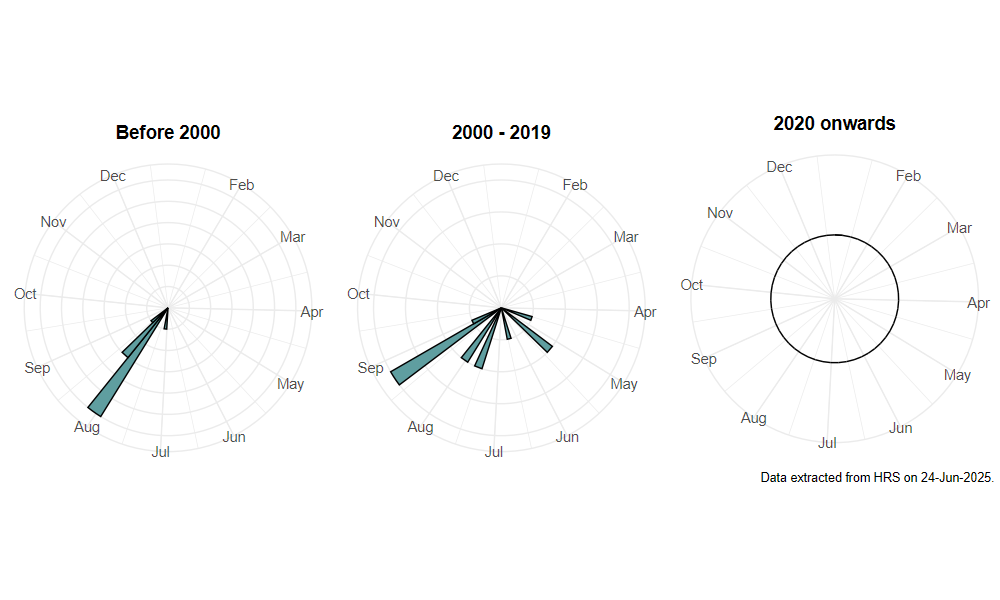Eupeodes lundbecki (Soot-Ryen, 1946)
Identification
Identification difficulty = 5. ![]()
![]() according to Ball & Morris, 20241
according to Ball & Morris, 20241
Biology
The larva is unknown. This is a common species on the continent, where adults are found in mixed woodland, conifer plantations, gardens, etc., and visit a variety of flowers, especially white umbels, thistles Cirsium and Carduus spp. and often settle on sun-lit vegetation. According to Speight (2017)2 in flight it is very reminiscent of Scaeva.
Flight period
The following plots show the number of unique records per week excluding those reported to be of immature stages.

Status
Occasional vagrant to the British Isles.
Distribution
Added to the British list by Watt & Robertson (1990)3 from specimens at Aberdeen in 1976, Fair Isle in 1982 and Tynron, Dumfries in 1984, and subsequently recorded in several years from Stiffkey, Norfolk by Ivan Perry. It is regarded as migratory in continental Europe and large scale movements apparently occur out of Scandinavia in August/September. Occurrences on the east coast are consistent with this being a migrant/vagrant from northern Europe.

-
Ball, S., & Morris, R. (2024). Hoverflies of Britain and Ireland. WILDGuides (3rd ed.). Oxford: Princeton University Press. ↩
-
Speight, M. (2017). Species accounts of European Syrphidae ( No. 97). yrph the Net, the database of European Syrphidae (Diptera) (p. 294). Dublin: Syrph the Net publications. Retrieved from https://pollinators.ie/wordpress/wp-content/uploads/2018/05/StN-2017-Species-Accounts.pdf ↩
-
Watt, K., & Robertson, D. (1990). Eupeodes lundbecki (Soot-Ryen) (Diptera: Syrphidae) new to Britain and its separation from related species. Dipterists Digest (first series), 6, 23–27. ↩